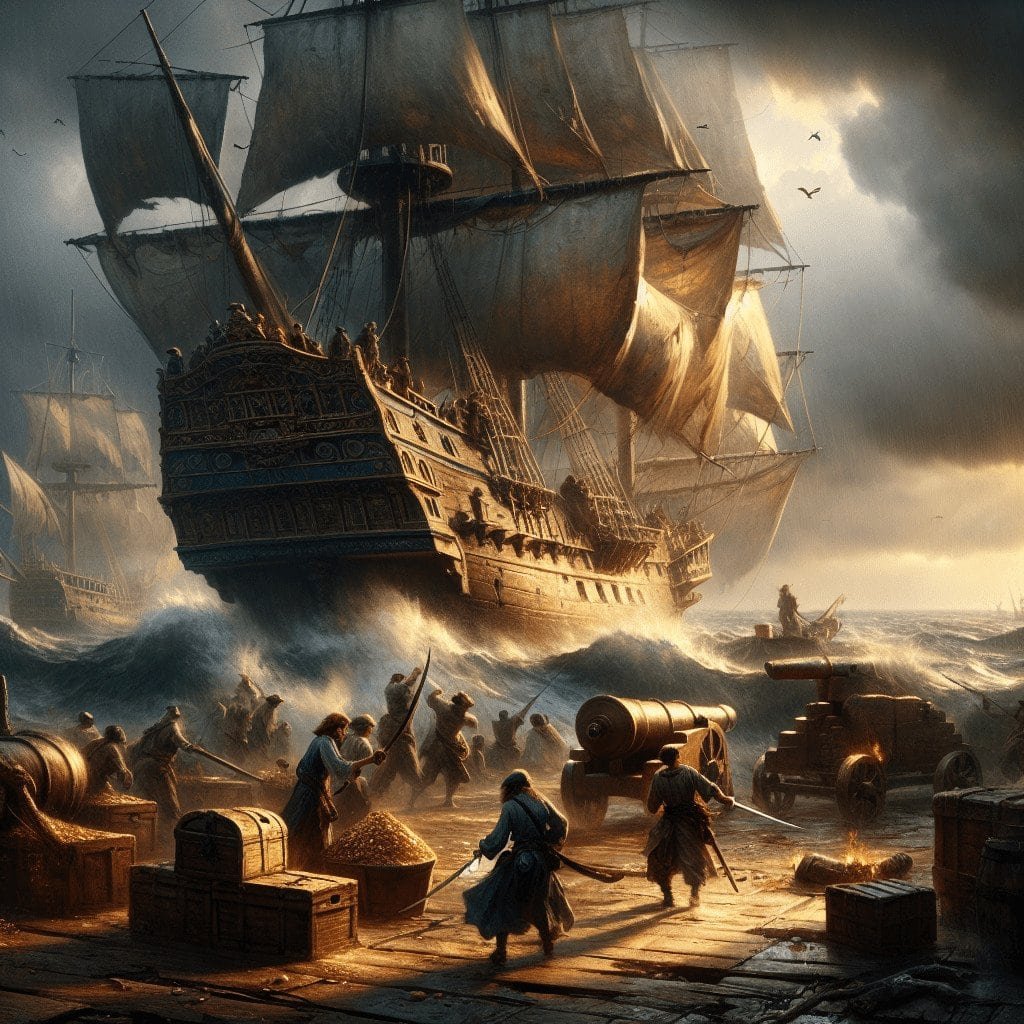The Era of Piracy: Duration and Impact on Maritime History
Introduction to the Age of Piracy
Piracy, the act of attacking and robbing ships at sea, has been a significant aspect of maritime history since ancient times. However, the most notorious period, often referred to as the “Golden Age of Piracy,” spanned from the late 17th century to the early 18th century. This article explores the duration of pirate dominance over the seas and examines their impact on global trade and navigation.
The Timeline of Pirate Dominance
The era of piracy can be broadly categorized into several phases, each marked by significant events and notorious figures who shaped the course of maritime lawlessness.
- Ancient and Medieval Piracy: As early as the 14th century BC, sea robbers threatened the Aegean and Mediterranean waters. In the medieval period, the Vikings emerged as fearsome marauders from the north, raiding coastal communities across Europe.
- The Golden Age of
Piracy (Late 17th – Early 18th Century):
This period is often considered the pinnacle of pirate activity, featuring legendary pirates like Blackbeard (Edward Teach), Bartholomew Roberts, and Anne Bonny. It began around 1650 and lasted until approximately 1720. - Decline and Suppression: By the 1720s, increased naval patrols and the implementation of stricter maritime laws by European powers led to a significant decline in piracy.
Factors Contributing to the Rise of Piracy
Several factors contributed to the flourishing of piracy during its golden age:
- Economic Hardship: Many turned to piracy as a reaction to economic hardship and lack of employment opportunities, especially former privateers who were left unemployed after wars.
- Weak Naval Enforcement: During periods of war, naval forces were often stretched thin, reducing their ability to patrol and secure major trade routes effectively.
- Profitability: The lucrative nature of trade routes, particularly those carrying precious metals and spices, made them attractive targets for pirates seeking wealth.
Impact of Piracy on Global Trade
Piracy had a profound impact on global trade during its peak, influencing the economic and political policies of many maritime nations.
- Increased Shipping Costs: The threat of piracy led to higher shipping costs, as merchants had to invest in armed guards and convoys to protect their vessels.
- Shift in Trade Routes: To avoid pirate-infested waters, shipping routes were often altered, leading to changes in the flow of goods and economic power.
- Development of Naval Forces: The persistent threat of piracy prompted nations to develop stronger naval forces and international cooperation to protect commerce and navigation.
Notable Pirates and Their Legacies
The Golden Age of Piracy is marked by several iconic figures whose actions have cemented their place in history.
- Edward Teach (Blackbeard): Perhaps the most famous pirate, known for his fearsome image and the blockade of Charleston, South Carolina.
- Bartholomew Roberts: Nicknamed “Black Bart,” Roberts is considered the most successful pirate of the Golden Age, capturing over 400 ships.
- Anne Bonny and Mary Read: These female pirates broke social norms and were key figures in piracy lore, known for their boldness and defiance of the patriarchal society of their time.
Conclusion: The Legacy of Piracy
While the era of traditional sea piracy lasted prominently from the 1650s to the 1720s, its impact on maritime history is enduring. The romanticized image of swashbuckling pirates belies the genuine challenges they posed to global trade and navigation. Today, modern piracy still exists, posing threats in regions like the Somali coast and the Strait of Malacca, reminding us that the issues of piracy are not just historical but continue to evolve with time.
The legacy of piracy has also influenced cultural aspects, inspiring countless books, films, and festivals, and remains a topic of fascination and study in maritime history.
